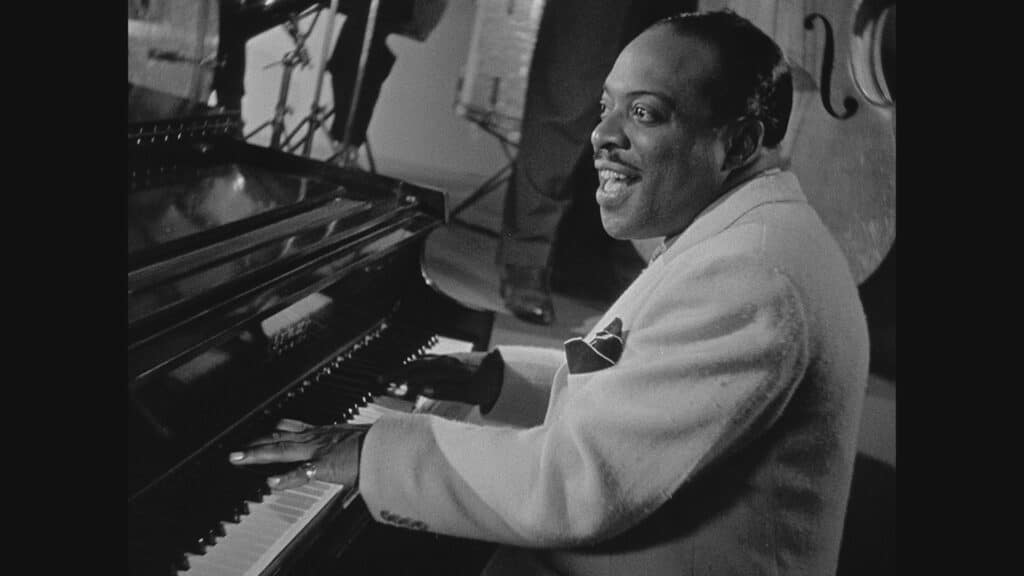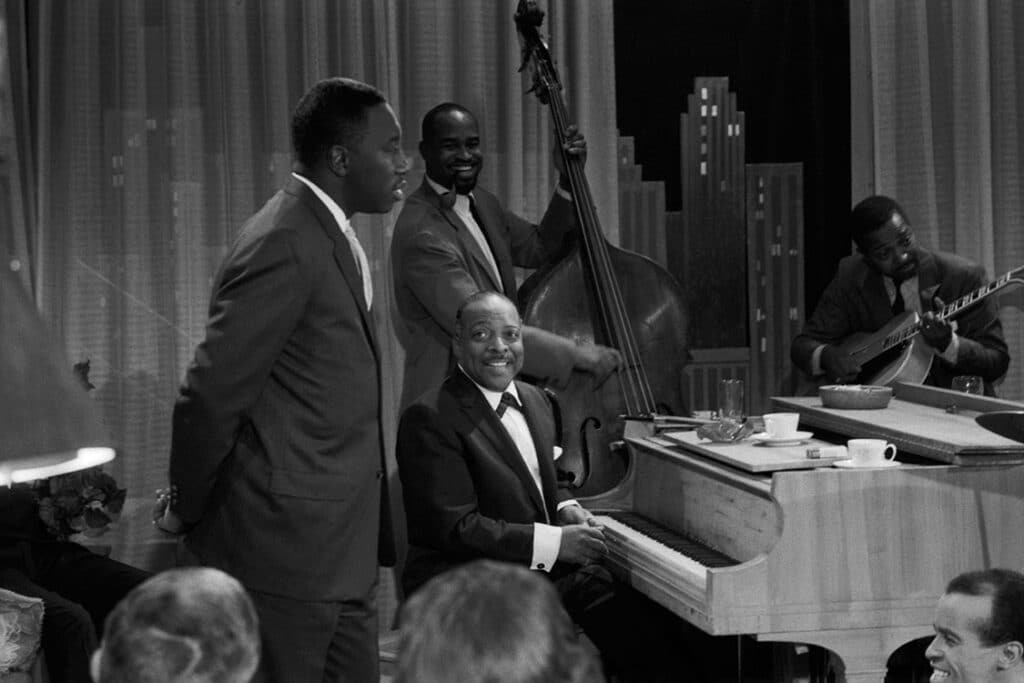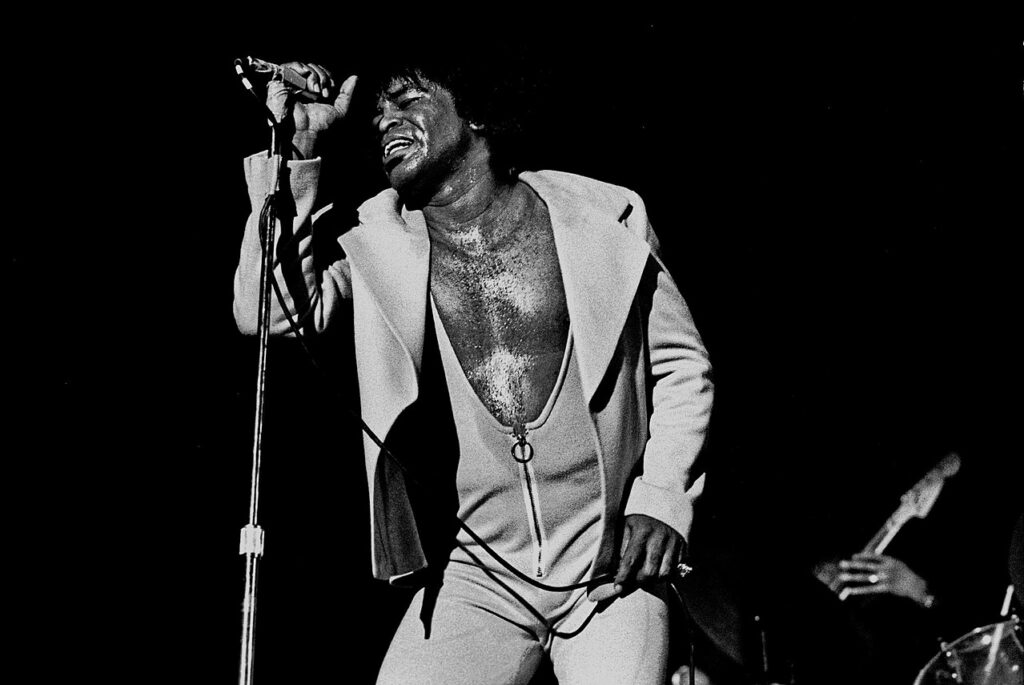Count Basie is a popular American jazz pianist, organist, and leader of a cult big band. Basie is one of the most important personalities in the history of swing. He managed the impossible - he made the blues a universal genre.

Childhood and youth of Count Basie
Count Basie was interested in music almost from the cradle. The mother saw that the boy was interested in music, so she taught him to play the piano. At an older age, Count was hired by a tutor who taught him how to play a musical instrument.
Like all children, Count attended high school. The boy dreamed of the life of a traveler, because carnivals often came to their town. After receiving his high school diploma, Basie worked part-time at the local theater.
The guy quickly learned to control the spotlights for the vaudeville show. He did well on other minor assignments, for which he received free passes to performances.
Once Count had to replace the pianist. It was his first experience of being on stage. The debut was successful. He quickly learned to improvise music for shows and silent films.
By that time, Count Basie was working as a musician in various bands. The bands performed at club venues, resorts, bars and restaurants. At one time, Count visited the show Kings of Syncopation by Harry Richardson.
Soon Count made a difficult decision for himself. He moved to New York, where he met James P. Johnson, Fats Waller, and other stride musicians in Harlem.
The creative path of Count Basie
After moving, Count Basie worked for a long time in the orchestras of John Clark and Sonny Greer. He played in cabarets and discos. It was not the best period in terms of workload. Count did not suffer from a lack of attention. On the contrary, his schedule was so busy that in the end the musician began to have a nervous breakdown.
Basie decided to take a break. He clearly understood that in such a state there could be no talk of speeches. Some time later, Count returned to the stage.
He began collaborating with variety show Keith & Toba at the age of 20. Basie was promoted to music director and accompanist. In 1927, he accompanied a small musical group in Kansas City. The musician stayed in a provincial town for a long time, the band broke up and the musicians were left without work.
Basie became part of the popular Walter Page's Blue Devils ensemble. Basie was part of the group until 1929. He then collaborated with obscure orchestras. This position of the musician categorically did not suit. Everything fell into place when he became part of Bennie Moten's Kansas City Orchestra.
Benny Moten died in 1935. This tragic event forced Count and the members of the orchestra to create a new ensemble. It consisted of nine members with drummer Joe Jones and tenor saxophonist Lester Young. The new ensemble began performing under the name Barons of Rhythm.
Getting Started Reno Club
Some time later, the musicians began working at the Reno Club (Kansas City). The musical compositions of the ensemble began to be actively reproduced on local radio stations. This led to an increase in popularity and a contract with the National Booking Agency and Decca Records.
With the assistance of a radio concert host, Basie received the title "Count" ("Count"). The ensemble of the musician constantly developed. The band members experimented with sound. They soon performed under the new name Count Basie Orchestra. It was under such a creative pseudonym that the team reached the status of the best big band of the swing era.
Soon the band's recordings fell into the hands of producer John Hammond. He helped the musicians leave the province and move to New York. The Basie Count Ensemble was distinguished by the fact that it included exceptional musicians - real improvising soloists.
The powerful composition allowed to saturate the repertoire with "juicy" pieces based on the blues harmonic scheme, and almost "on the go" to compose riffs that support temperamental musicians.

In 1936, the Count Basie Orchestra had the following notable musicians:
- Buck Clayton;
- Harry Edison;
- Hot Lips Page;
- Lester Young;
- Hershel Evans;
- Earl Warren;
- Buddy Tate;
- Benny Morton;
- Dicky Wells.
The rhythm section of the ensemble was rightfully recognized as the best in jazz. Concerning musical compositions. Music lovers should definitely listen to: One O'Clock Jump, Jumpin' at the Woodside, Taxi war Dance.
Early 1940s
The beginning of the 1940s began with the fact that new musicians joined the ensemble. We are talking about Don Bayes, Lucky Thompson, Illinois Jacket, trumpeter Joe Newman, trombonist Vicki Dickenson, JJ Johnson.
By 1944, more than 3 million records of the ensemble had been sold all over the planet. It would seem that the career of musicians should continue to develop. But it was not there.
In the career of Basie and his big band, due to wartime conditions, there was a creative crisis. The composition was constantly changing, which led to a deterioration in the sound of musical compositions. Almost all ensembles experienced a creative crisis. Basie had no choice but to disband the roster in 1950.
In 1952, the ensemble resumed its activities. To restore Basie's reputation, his team began to actively tour. The musicians have released a number of worthy works. Count earned the title of "the consummate master of swing". In 1954, the musicians went on a tour of Europe.
Over the next few years, the ensemble's discography has been replenished with a significant number of records. In addition, Basie released solo collections and collaborated with other pop artists.
Since 1955, the musician has repeatedly occupied a leading position in the polls of jazz lovers and music critics. Soon he created a music publishing house.
In the early 1970s, the composition of the team changed from time to time. But in this case it was for the benefit of the repertoire. The compositions retained their power, but at the same time, “fresh” notes were heard in them.
From the mid-1970s, Count appeared on stage less and less. It's all because of the disease that took away strength in him. From the early 1980s, he directed the ensemble from a wheelchair. The last years of his life the musician spent at his desk - he wrote his autobiography.
After Basie's death, Frank Foster took over as leader. The orchestra was then led by trombonist Grover Mitchell. Unfortunately, the ensemble without the talented Count began to fade over time. The executives failed to follow Basie's path.
Death of Count Basie
The musician died on April 26, 1984. Count died at 79. The cause of death is pancreatic cancer.



